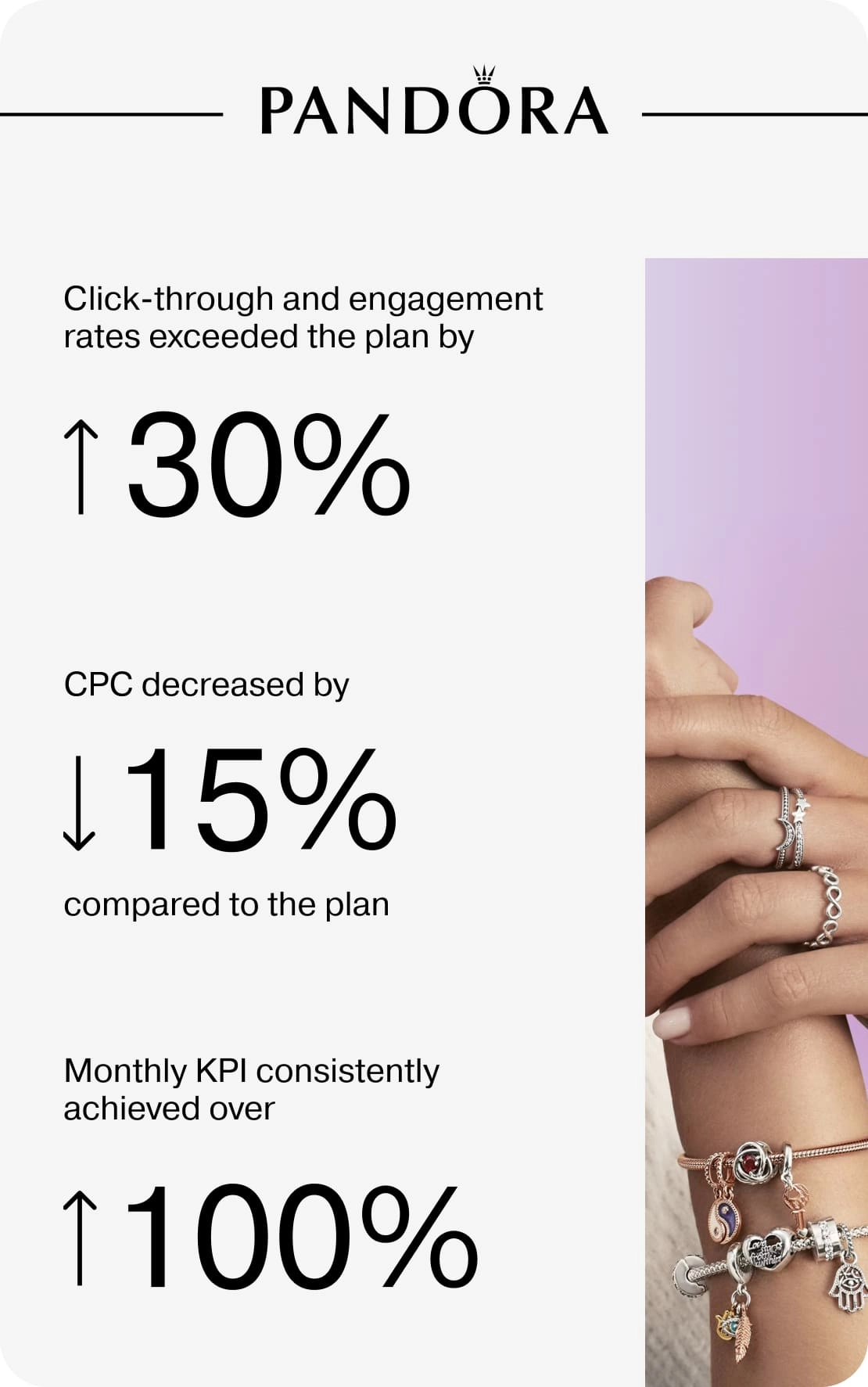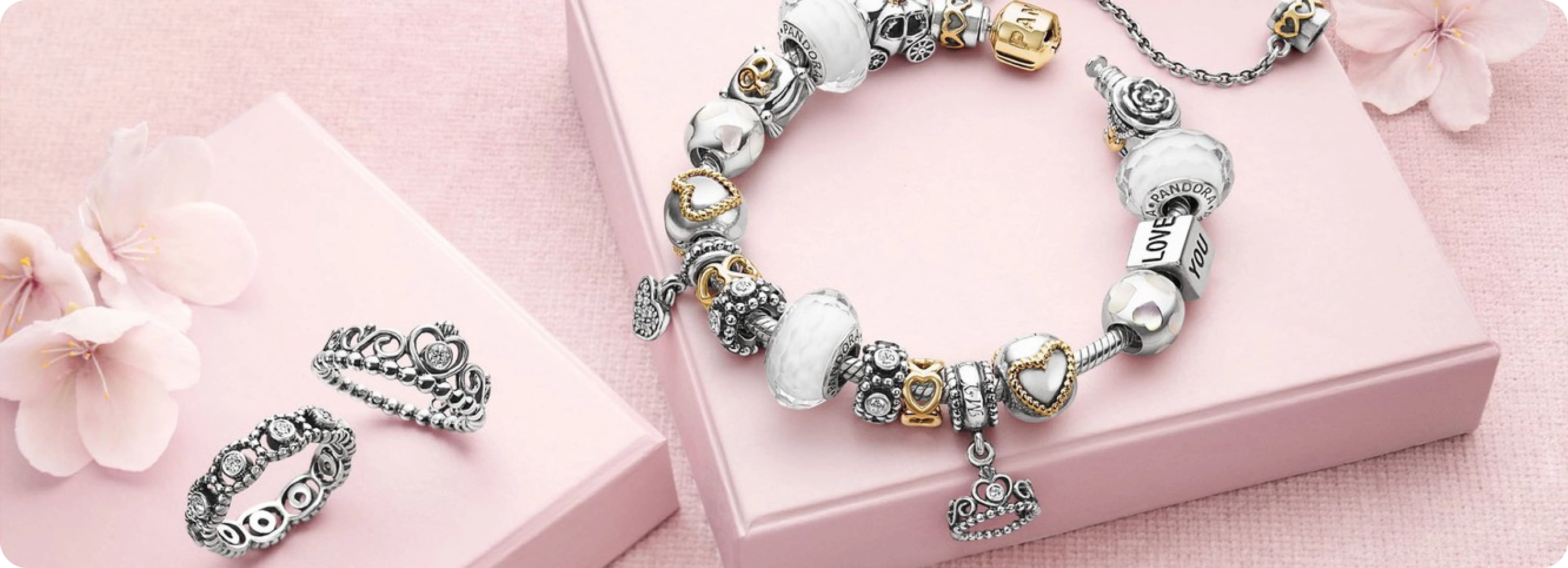
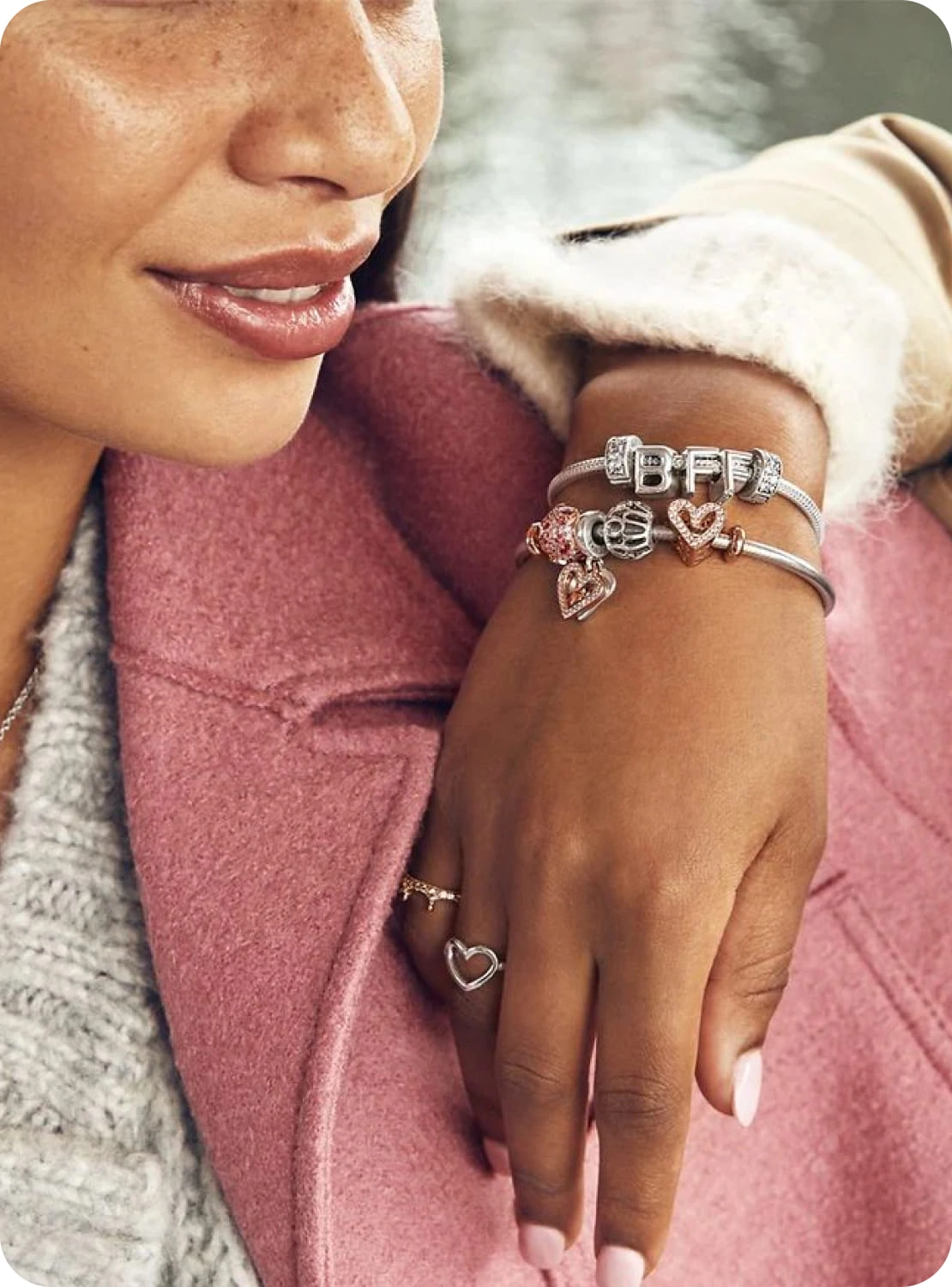
Pandora is a jewelry brand that has been in the market for over 35 years. Pandora’s jewelry is sold in 90 countries across six continents, with more than 9,600 retail locations. By 2022, over 190 Pandora stores had been opened in Russia.
On its social media platforms, the brand not only advertised its products but also engaged users with various types of content:
- Shared promotions and current offers in the online store and offline locations across Russia
- Announced new jewelry collections
- Posted about special projects and interesting brand news
- Hosted live streams with guest speakers and bloggers
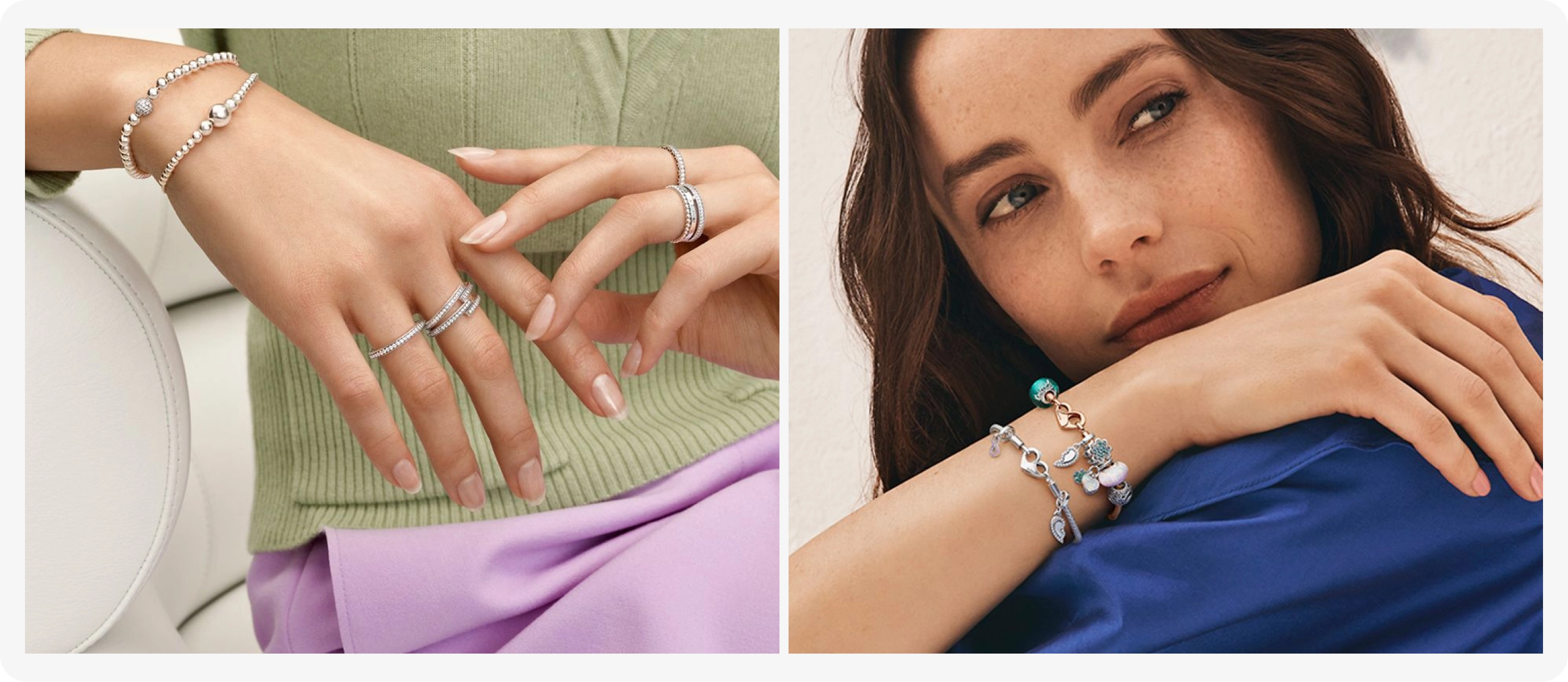
task
The main objective was to drive sales and increase brand loyalty for Pandora. Specifically, the goal was to inform customers about various promotions by driving traffic to the website and social media channels.
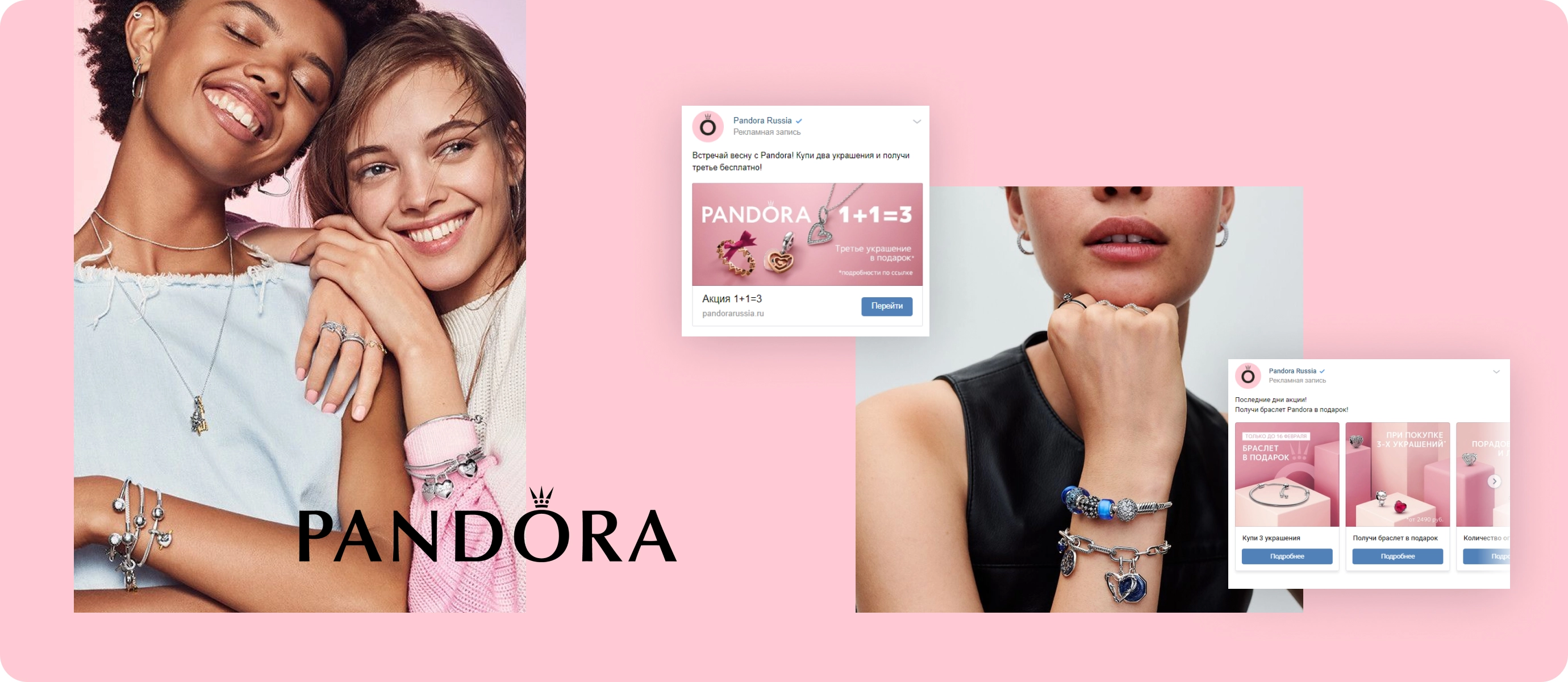
solution
The ad campaign was carried out on Facebook, Instagram (social networks banned in Russia), VKontakte, and Odnoklassniki. For the project, we used two main formats:
- Promo posts in the newsfeed. These placements helped boost engagement in Pandora’s groups: users subscribed more to the communities, commented, liked, and shared Pandora’s posts.
- Targeted ads in the newsfeed and Stories with a button linking to the website. This format increased the number of visitors to Pandora’s website.
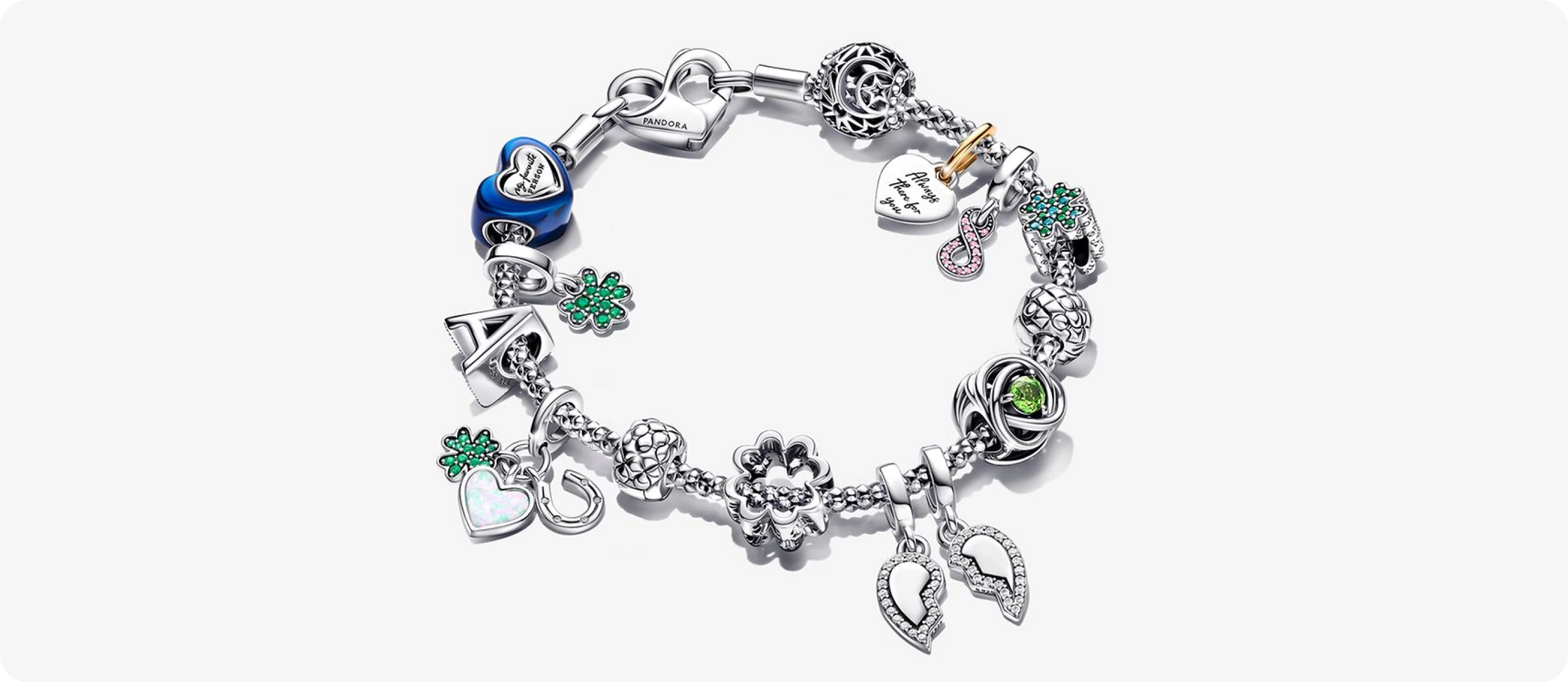
audience targeting, creatives and analytics
On social media, we identified several target audiences for Pandora. These audiences varied not only by gender, age, and geography but also by long-term interests and behavior. The core audience was composed of women aged 20-35, with an average to above-average income, interested in purchasing jewelry, visiting competitors' stores, and making relevant searches both generally and for specific products. Based on these audiences, we built retargeting and lookalike segments, which helped expand reach and improve contact quality.
For each target audience, we developed a specific creative with the most relevant content. All placements were tracked using different UTM tags, allowing us to evaluate the effectiveness of each creative. The main tool for analytics was Google Analytics. Throughout the campaign, we regularly assessed the segments, optimized the strategy, and provided weekly reporting.
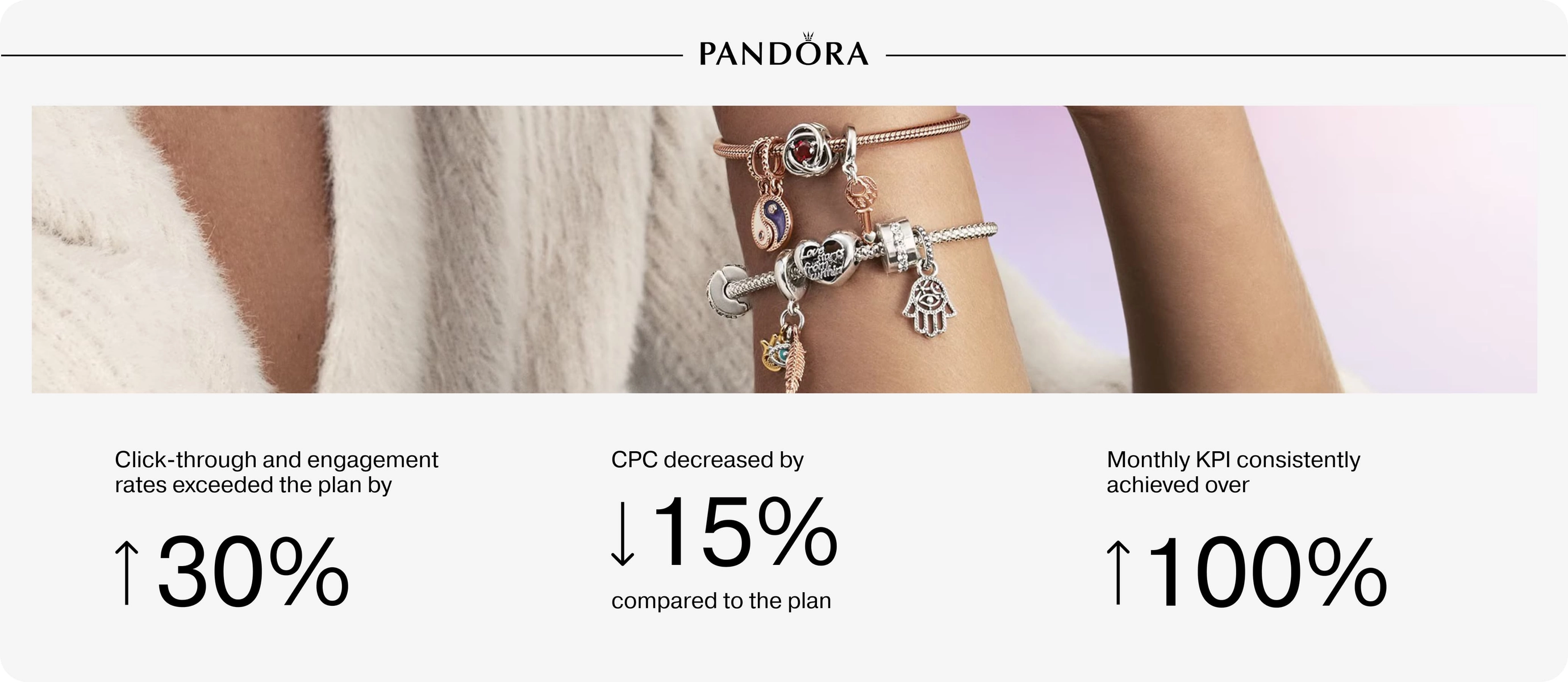
Pandora is a jewelry brand that has been in the market for over 35 years. Pandora’s jewelry is sold in 90 countries across six continents, with more than 9,600 retail locations. By 2022, over 190 Pandora stores had been opened in Russia.
On its social media platforms, the brand not only advertised its products but also engaged users with various types of content:
- Shared promotions and current offers in the online store and offline locations across Russia
- Announced new jewelry collections
- Posted about special projects and interesting brand news
- Hosted live streams with guest speakers and bloggers
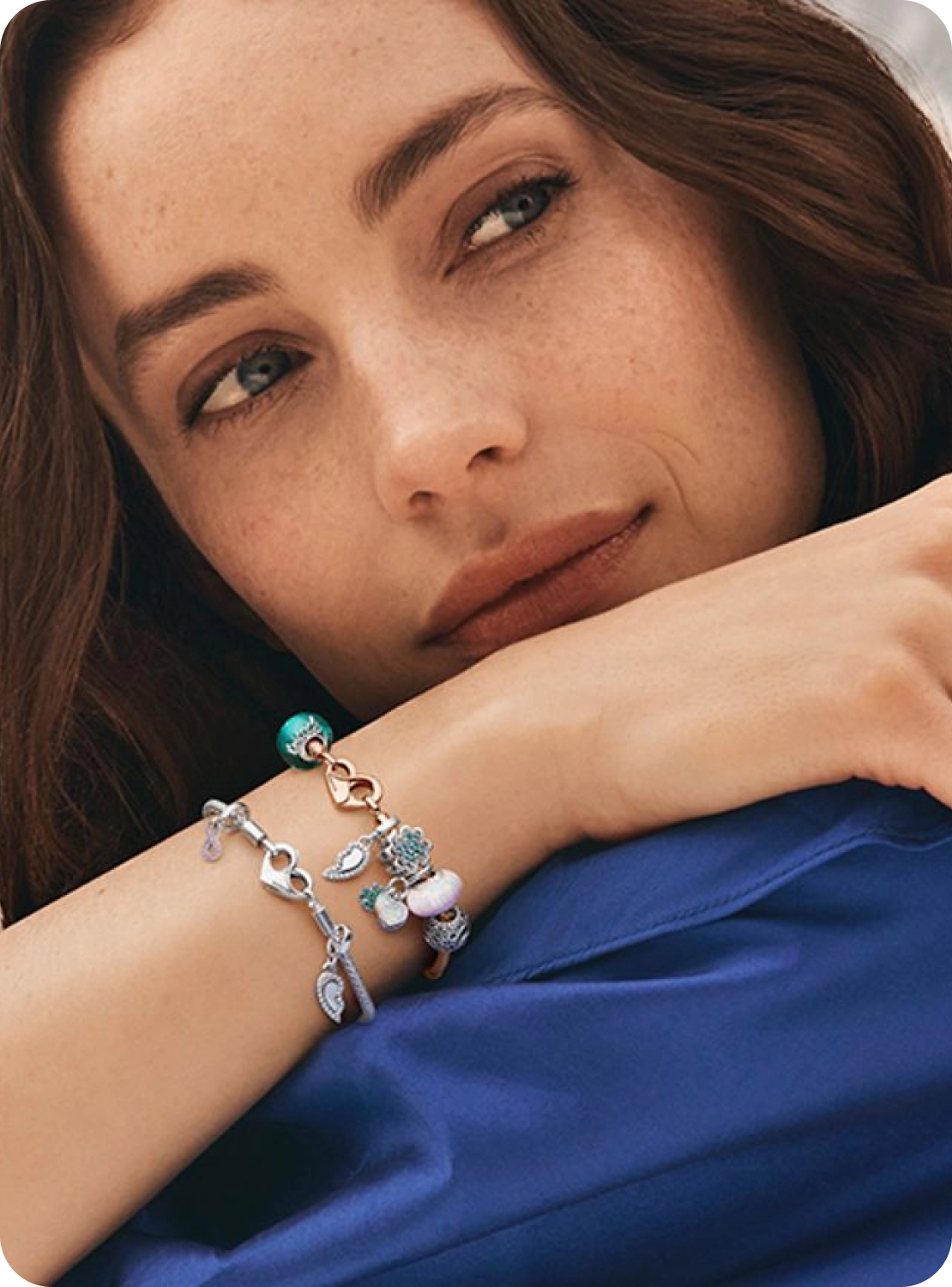
task
The main objective was to drive sales and increase brand loyalty for Pandora. Specifically, the goal was to inform customers about various promotions by driving traffic to the website and social media channels.
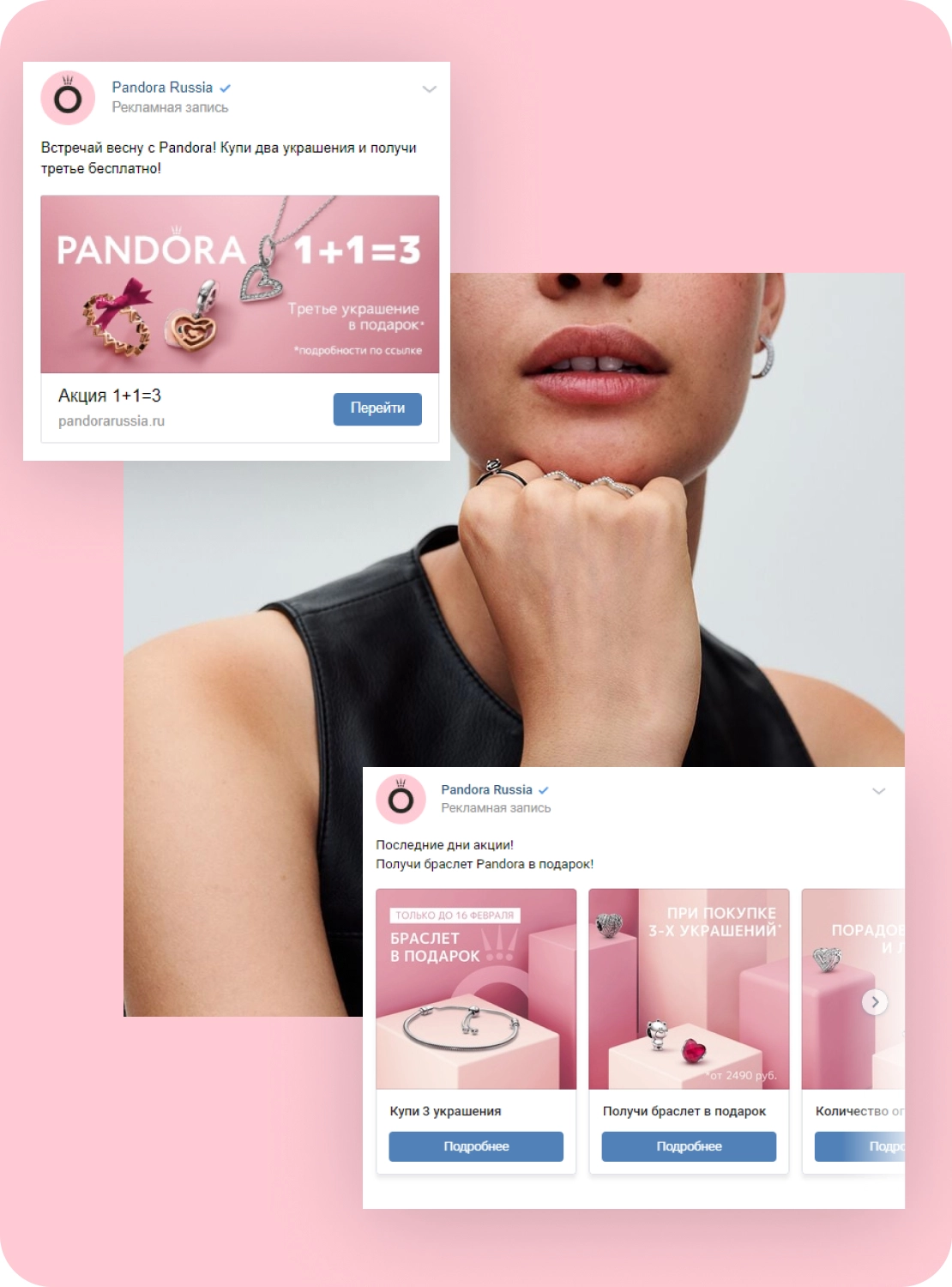
solution
The ad campaign was carried out on Facebook, Instagram (social networks banned in Russia), VKontakte, and Odnoklassniki. For the project, we used two main formats:
- Promo posts in the newsfeed. These placements helped boost engagement in Pandora’s groups: users subscribed more to the communities, commented, liked, and shared Pandora’s posts.
- Targeted ads in the newsfeed and Stories with a button linking to the website. This format increased the number of visitors to Pandora’s website.
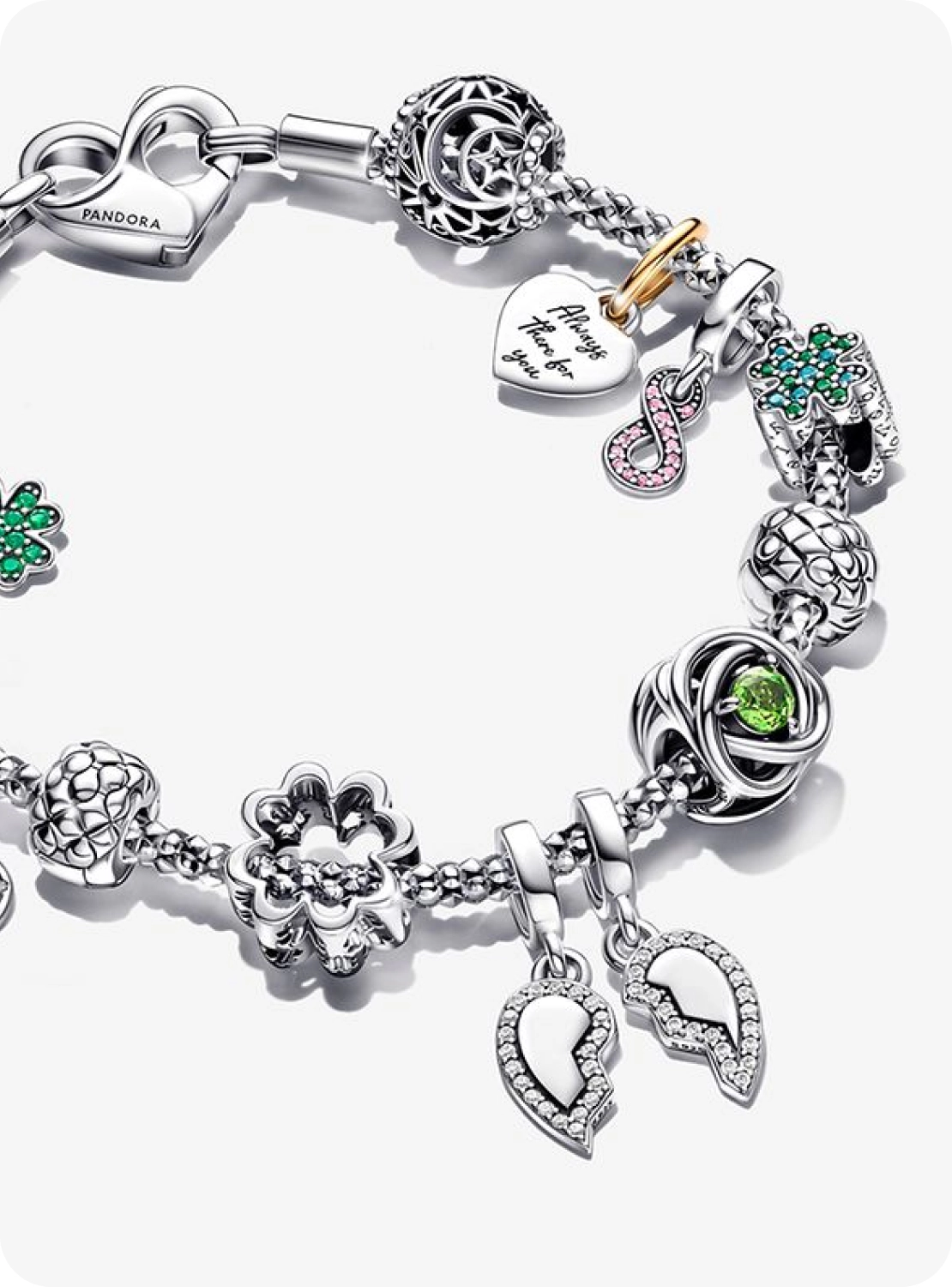
audience targeting, creatives and analytics
On social media, we identified several target audiences for Pandora. These audiences varied not only by gender, age, and geography but also by long-term interests and behavior. The core audience was composed of women aged 20-35, with an average to above-average income, interested in purchasing jewelry, visiting competitors' stores, and making relevant searches both generally and for specific products. Based on these audiences, we built retargeting and lookalike segments, which helped expand reach and improve contact quality.
For each target audience, we developed a specific creative with the most relevant content. All placements were tracked using different UTM tags, allowing us to evaluate the effectiveness of each creative. The main tool for analytics was Google Analytics. Throughout the campaign, we regularly assessed the segments, optimized the strategy, and provided weekly reporting.
